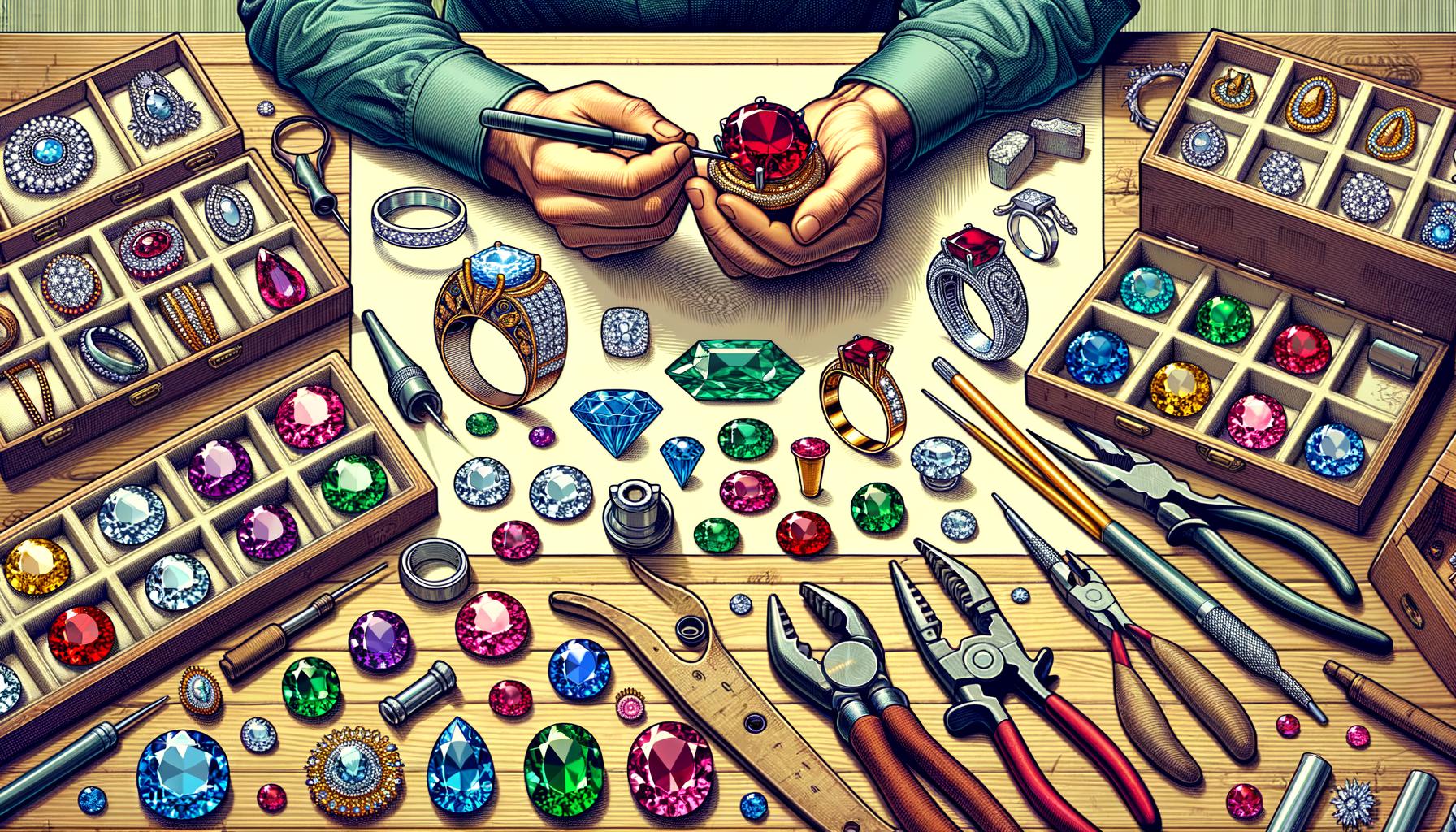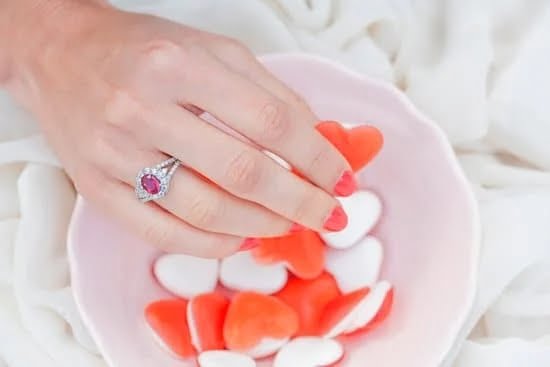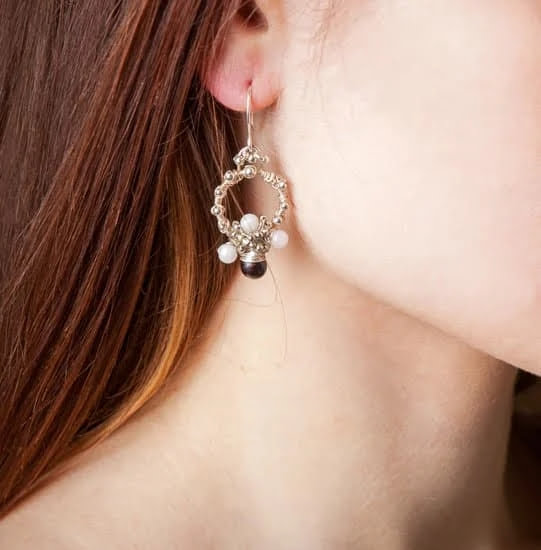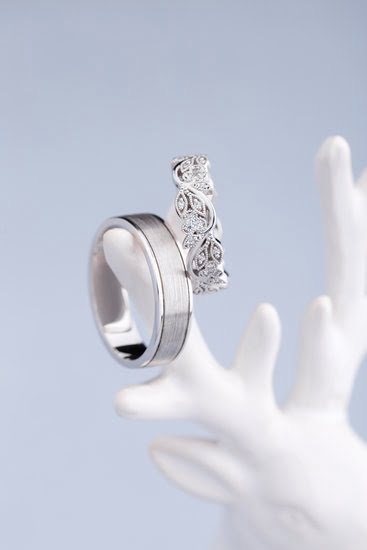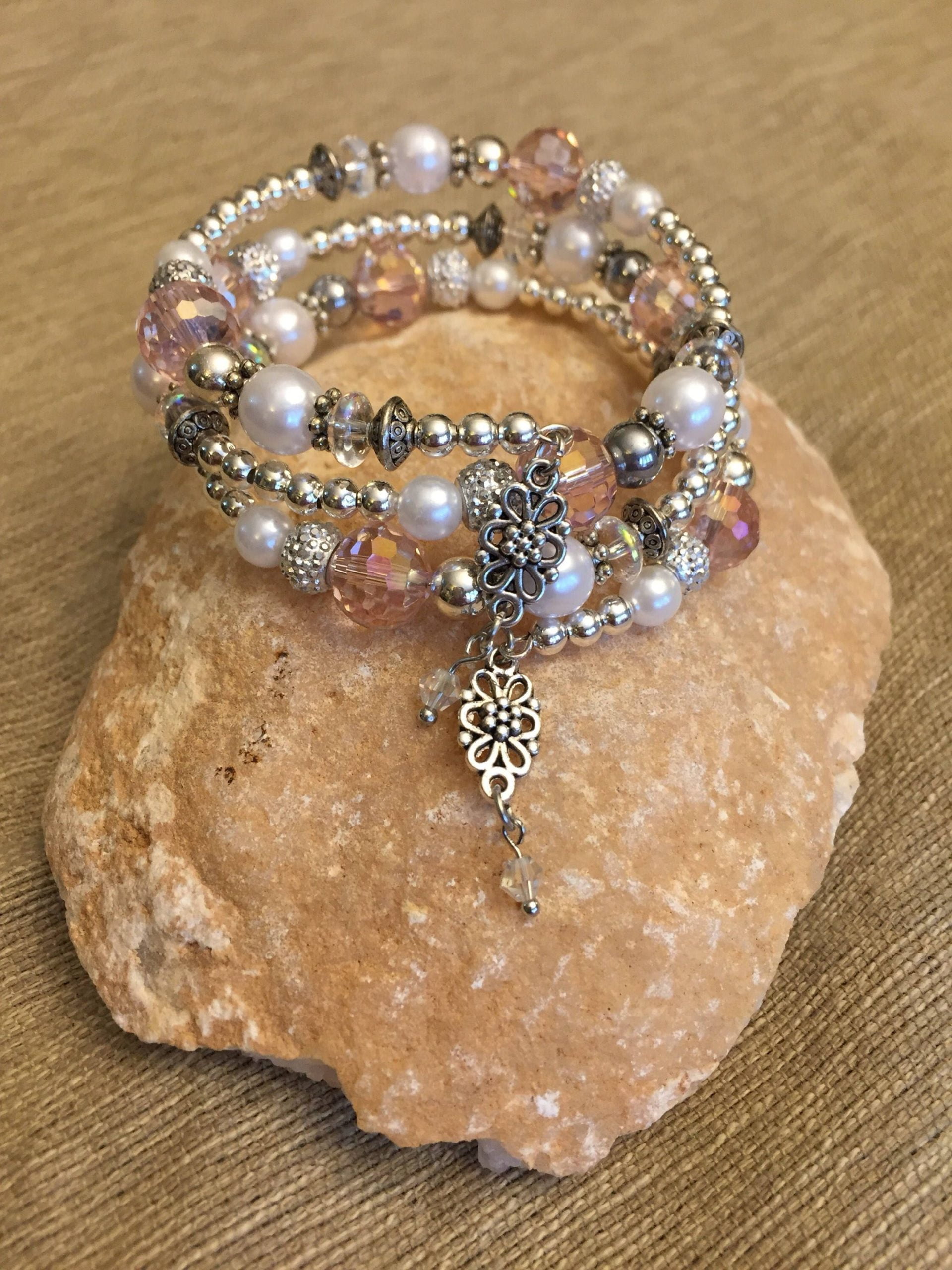In the world of jewelry design, gemstones undoubtedly hold a timeless allure that has captivated artisans and enthusiasts for centuries. These vibrant and dazzling natural wonders bring an unparalleled element of elegance and sophistication to any jewelry creation.
Understanding how to incorporate gemstones into your jewelry designs can transform a simple piece into a masterpiece, resonating with personal significance or historical symbolism. Gemstones not only embellish the physical aesthetics but also add depth, character, and often emotional value to the pieces they adorn.
Incorporating gemstones into your jewelry line is essential for creating captivating collections that appeal to diverse tastes and preferences. Whether you are a budding jewelry designer or an established brand looking to diversify your offerings, mastering the art of gemstone integration can set your designs apart in a crowded market.
By understanding the varying types of gemstones available-from precious stones like diamonds and rubies to semi-precious options such as amethyst and turquoise-you gain the versatility needed to craft unique pieces that resonate with different clienteles.
Moreover, today’s consumers are increasingly aware of trends while valuing authenticity and craftsmanship in their purchases. The strategic use of gemstones allows you to weave these elements into your creations effectively.
From leveraging historic significance to tapping into modern trends, incorporating these stunning minerals offers endless opportunities for innovation. As we delve deeper into this guide, you’ll discover essential tips on selecting the right gems, setting techniques, design inspiration, ethical considerations, and much more-arming you with all the knowledge required to master gemstone jewelry design.
Understanding Different Types of Gemstones
When it comes to jewelry design, understanding the various types of gemstones is crucial. Broadly speaking, gemstones are categorized into two main types: precious and semi-precious. Precious gemstones include diamonds, rubies, sapphires, and emeralds.
These stones have been historically revered for their rarity, brilliance, and high economic value. Semi-precious gemstones encompass a broader range including amethysts, garnets, citrines, and opals among others. While these stones are generally more abundant and hence less expensive than precious gems, they offer a wider array of colors and unique characteristics that make them equally captivating for designers.
Popular Gemstones and Their Unique Characteristics
Diamonds are renowned for their exceptional hardness and sparkle, making them an enduring favorite in both classic and contemporary designs. Rubies captivate with their deep red hues symbolizing love and passion; they are often used as statement pieces or accents in elaborate arrangements.
Sapphires come in a spectrum of colors but are most famous for their deep blue shades; they’re sought after for their historical significance as symbols of wisdom and royalty. Emeralds enchant with their rich green color synonymous with beauty and renewal; their unique inclusions often known as ‘jardin,’ add character to each stone.
On the semi-precious side, amethysts attract attention with their vibrant purple shades ranging from light lilac to intense royal purple; they’re ideal for adding a pop of color without breaking the bank. Garnets offer versatility with colors spanning from red to green to orange; they’re commonly used in vintage-inspired designs given their historic popularity.
Opals stand out due to their mesmerizing play-of-color effect-tiny silica spheres within the stone diffract light into a dazzling display-making each piece unique. Understanding how to incorporate gemstones into your jewelry designs involves appreciating these distinct traits which can help you choose the right stones that align with your creative vision.
The Interplay Between Gems
Matching different types of gemstones within one piece offers endless possibilities for creativity but requires careful consideration of each stone’s properties. For example, pairing hard stones like sapphires or diamonds with softer stones like opals must be done thoughtfully to prevent damage during wear or setting processes.
Contrast can be achieved by balancing vivid-colored stones like emeralds or rubies against softer hues such as aquamarine or morganite; this interplay amplifies each gemstone’s visual appeal while maintaining harmony within the design.
In summary, gaining knowledge about various gemstones not only empowers you to craft stunning pieces but also ensures that your designs resonate with both aesthetic beauty and functional durability. Whether you’re mixing precious gems with semi-precious ones or exploring new ways on how to incorporate gemstones into your jewelry designs effectively, understanding these basics is a foundational step towards mastering this art form.
Choosing the Right Gemstones for Your Designs
When deciding how to incorporate gemstones into your jewelry designs, choosing the right gems can significantly impact both the aesthetic appeal and overall quality of your pieces. The four Cs-color, clarity, cut, and carat-are fundamental factors in determining the suitability of a gemstone for your design.
Color plays a central role as it sets the tone and mood for the piece. For example, deep blue sapphires suggest elegance and sophistication, while vibrant green emeralds evoke a sense of vitality and abundance.
Matching gemstones with different types of metal can also enhance or detract from your design. Gold’s warm hues complement stones like rubies and citrines by highlighting their rich colors. In contrast, silver’s cool tones work exceptionally well with cool-colored gemstones such as amethysts and topaz because they maintain a harmonious look without overwhelming the stone’s natural beauty. Platinum is another fantastic choice for more precious gemstones like diamonds due to its durability and neutral color.
Besides aesthetic considerations, it’s vital to think about practicality when incorporating gemstones into your designs. A good idea would be to evaluate each gemstone’s hardness on the Mohs scale to ensure suitability for everyday wear. For example, diamonds rank at 10 on the Mohs scale making them ideal for engagement rings that endure daily use, whereas softer stones like opals (rated 5-6) are better suited for earrings or pendants that face less contact.
| Factor | Consideration |
|---|---|
| Color | Sets the tone/mood; e.g. deep blue sapphires suggest sophistication. |
| Metal Type | Gold complements warm-hued stones; silver matches well with cool-toned gems. |
| Practicality | Hardness on Mohs scale determines suitability for everyday wear; e.g. diamonds vs. opals. |
Design Inspiration
Gemstone jewelry has stood the test of time, steeped in both historical significance and modern trends. Historically, gemstones have been used not just for their beauty but for their supposed metaphysical properties. For example, emeralds were highly prized by ancient Egyptians for both their vibrant color and believed powers of protection and wisdom. Similarly, rubies were considered the “king of gems” in ancient India, symbolizing passion and power.
Incorporating these gems into contemporary designs often requires a nod to tradition while embracing new aesthetics. One popular trend is the vintage-inspired ring, where intricate filigree work complements an old-cut diamond or sapphire centerpiece. This style artfully marries the elegance of yesteryears with today’s craftsmanship and materials, making it suitable for modern tastes yet timeless enough to be passed down through generations.
Different cultures also greatly influence how gemstones are used in jewelry designs today. For instance, colorful beadwork using turquoise and coral is prominent in Native American jewelry traditions and remains popular among artisans worldwide aiming to incorporate that rustic beauty into their collections. Learning how to incorporate gemstones into your jewelry designs often involves studying these historical influences to create pieces that resonate with diverse aesthetic values while offering a unique twist tailored to contemporary preferences.
Modern trends also reflect environmental consciousness; there’s a growing demand for ethically sourced gemstones which are traceable back to responsible mining practices or lab-created alternatives that offer similar brilliance without the ethical concerns. When considering how to incorporate gemstones into your designs:
- Research different cultural significances: This can provide inspiration for motifs or color schemes.
- Mix new with old: Vintage settings with modern gemstone cuts present a fresh take on classic styles.
Techniques for Setting Gemstones
Successfully setting gemstones into jewelry involves multiple techniques that can enhance both the aesthetic appeal and the durability of your designs. The method you choose will depend on the type of gemstone, its size, shape, and how you wish to showcase it within your overall design. Here, we’ll delve into some common yet versatile settings: prong, bezel, channel, and pave.
Prong Setting
The prong setting employs metal claws or prongs to hold the gemstone in place. This technique is popular for diamonds and precious gems as it allows maximum light exposure to enhance the stone’s brilliance.
Typically used in solitaire rings, the number of prongs can vary from four to six, depending on the security required for the gem. When thinking about how to incorporate gemstones into your jewelry designs using a prong setting, consider that this method highlights the gemstone prominently while maintaining a delicate appearance.
Bezel Setting
A bezel setting surrounds the gemstone with a thin metal rim that holds it securely in place. This technique offers excellent protection for softer or more fragile stones such as opal or moonstone, making it ideal for everyday wear pieces like rings or bracelets.
The full or partial bezel can be utilized based on your design needs-while a full bezel covers more of the stone’s edge for greater security; a partial bezel can expose more of the stone’s surface area for enhanced visibility and luster.
Channel Setting
In a channel setting, gemstones are nestled between two tracks of metal without using individual prongs to secure each stone. This method is particularly effective for round-cut or princess-cut stones in designs such as eternity bands and tennis bracelets.
It provides a sleek appearance and ensures that stones lie smoothly against one another without gaps. When learning how to incorporate gemstones into your jewelry designs with a channel setting, ensure each gem is precisely calibrated to fit snugly within its designated space.
Pavé Setting
Pavé settings involve closely setting small gemstones together with minimal visible metal between them, creating an illusion of continuous sparkle across the jewelry piece’s surface. Often used with diamonds or other small-sized precious gems like sapphires or rubies, this technique works beautifully in engagement rings where you’d want an extra touch of brilliance without overshadowing a central stone. Mastery over pavé can add intricate detail and luxurious texture to any piece of fine jewelry.
Each setting technique brings unique advantages tailored specifically either to showcase particular characteristics of gemstones or cater to functional requirements dictated by their inherent qualities and uses within specific types of jewelry items.
Combining Gemstones With Other Elements
Pairing gemstones with other materials can create visually striking and unique jewelry pieces that stand out in any collection. Pearls, crystals, and even unexpected elements like wood or leather can complement gemstones beautifully. When considering how to incorporate gemstones into your jewelry designs, think about how different textures and finishes interact. For instance, pairing rough-cut gemstones with polished pearls can highlight the natural beauty of each element, creating an interesting contrast.
To achieve a balanced look when combining gemstones with other elements, start by choosing complementary colors and textures. Some popular combinations include:
- Gemstones and Pearls: Combining gemstones like sapphires or rubies with pearls can add a classic yet luxurious touch to your designs.
- Gemstones and Crystals: Mixing clear or colored crystals with vibrant gemstones creates a sparkling effect that catches light beautifully.
- Gemstones and Metal Accents: Gold or silver beads can accentuate the color of the gemstone and add elegance.
It’s also essential to create contrast without overwhelming any single element. When working on how to incorporate gemstones into your jewelry designs, ensure each component enhances rather than competes with others. Pairing small accent stones around a central larger gemstone is one way to achieve this balance.
Another approach is using varying shapes and sizes while ensuring symmetry in the design. For instance:
- Design Frame: Use smaller diamonds or crystals to create a frame around an emerald centerpiece.
- Alternating Patterns: Alternate between pearls and smaller turquoise stones for a beach-inspired necklace.
- Layered Strands: Layer strands of different materials such as gemstone beads with freshwater pearls for a multi-dimensional effect.
Mastering these combinations can lead to innovative designs that attract discerning clients looking for something truly unique. Your ability to blend various elements seamlessly will set you apart in the highly competitive world of jewelry design.
Customization and Personalization
Adding a personal touch to your gemstone jewelry designs can make a world of difference, elevating pieces from beautiful to truly meaningful. One effective way to achieve this is through custom engravings. Whether it’s a name, date, or special message, engravings offer a unique method to personalize jewelry. Engraving allows customers to mark significant milestones or convey personal sentiments, fostering an emotional bond with the piece that enhances its sentimental value.
Another popular approach is incorporating birthstones into your designs. Birthstones not only carry personal significance but also add vibrant color to the jewelry. Each month has its own designated gemstone, such as garnet for January and sapphire for September, providing endless opportunities for customization. By offering pieces that feature clients’ birthstones or those of their loved ones, you create jewelry that’s both deeply personal and visually striking.
Symbolic choices are another powerful tool in custom jewelry design. For instance, some clients might prefer gemstones associated with certain meanings or powers-like rose quartz for love or amethyst for tranquility.
Communicating these symbolic meanings during the design consultation can help guide your clients’ choices and ensure they end up with a piece that resonates on multiple levels. Understanding how to incorporate gemstones into your jewelry designs in ways that reflect personality and intent can set your brand apart from others.
| Customization Method | Description |
|---|---|
| Engravings | Names, dates, and messages etched onto the piece. |
| Birthstones | Incorporating specific gemstones based on birth months. |
| Symbolic Choices | Selecting gemstones based on their meanings and powers. |
Maintenance and Care for Gemstone Jewelry
Cleaning Techniques
To maintain the brilliance and beauty of your gemstone jewelry, regular cleaning is essential. Different gemstones require various cleaning methods due to their unique properties. A mild soap solution and a soft brush can be used for many gemstones, but be mindful that some stones are more delicate than others.
For example, avoid using ultrasonic cleaners or steamers on porous gemstones like opals and pearls as they can cause damage. Knowing how to incorporate gemstones into your jewelry designs also includes understanding the best ways to keep them looking their finest over time.
Proper Storage
The way you store gemstone jewelry significantly affects its longevity and appearance. Airtight containers are ideal for most pieces to prevent tarnish and protect them from humidity. Soft pouches or separate compartments in a jewelry box can prevent scratches, especially when storing harder stones like diamonds with softer ones such as emeralds or amethysts. Additionally, keeping direct sunlight away from certain gemstones like amethyst or topaz prevents color fading. A well-organized storage system ensures that each piece remains pristine.
Customer Education
Educating your customers on the maintenance and care of their gemstone jewelry not only enhances their experience but also builds trust in your brand. Providing detailed care instructions with every purchase is a valuable service; consider including tips on avoiding harsh chemicals or impact, which could harm the gemstones or their settings.
Offering complimentary cleaning services or selling specialized cleaning kits can reinforce how to incorporate gemstones into your jewelry designs while emphasizing proper upkeep for enduring allure. Ensuring that clients understand these care tips allows them to cherish their custom creations for many years.
Ethical Considerations and Sourcing
Ethical considerations have become increasingly important in the jewelry industry, particularly when it comes to sourcing gemstones. Consumers are more aware than ever of the impact their purchases can have on both people and the environment. Brands that prioritize ethical sourcing not only make a positive difference but also appeal to a growing segment of conscientious buyers. One key aspect to explore is how to incorporate gemstones into your jewelry designs in an ethically responsible manner.
Firstly, understanding what makes gemstone sourcing ethical is paramount. Ethical gemstones come from mines with stringent labor practices, ensuring fair wages and safe working conditions for miners. These standards aim to eliminate child labor and ensure equitable treatment for all workers in the supply chain. Additionally, many ethically sourced gemstones include certifications such as the Kimberley Process Certification Scheme (for diamonds) or Fair Trade certification. These credentials assure consumers that their purchases support humane practices.
Finding reputable suppliers who adhere to these ethical guidelines can be challenging but rewarding. Look for suppliers with transparent sourcing methods who can provide full traceability of their gemstones’ origins. Online directories and trade organizations often list certified suppliers specializing in ethically sourced stones. Furthermore, participating in industry events and forums dedicated to sustainability can also prove beneficial for networking and expanding your pool of trusted vendors.
| Certification | Description |
|---|---|
| Kimberley Process | Ensures diamonds are conflict-free |
| Fair Trade | Guarantees fair wages and safe working conditions |
Integrating ethically sourced gemstones into your collections not only aligns business practices with consumer values but can also set your brand apart in a saturated market. This commitment serves as a unique selling point, differentiating your products through social responsibility while educating customers on the significance behind their distinctive pieces.
Proper documentation and transparency about the journey of each gemstone add another layer of trust between you and your customers. Consider producing detailed reports or certificates that accompany individual jewelry pieces, explaining where the gemstone was mined and under what conditions it was extracted. This educational component fosters customer loyalty by making them feel part of an ethical movement while proudly wearing beautifully crafted jewelry.
Case Studies and Real-World Examples
When discussing how to incorporate gemstones into your jewelry designs, examining the work of successful designers and brands can offer invaluable insights. One renowned example is Tiffany & Co. a brand that has masterfully showcased the timeless beauty of gemstones through their iconic collections. Their use of high-quality diamonds, sapphires, and rubies set in platinum or gold showcases not only technical expertise but also an understanding of how to create elegant and luxurious pieces that appeal to a wide audience.
Another notable case is the work of British designer Monica Vinader, who has revolutionized contemporary gemstone jewelry with her unique blend of semi-precious stones and versatile, everyday designs. She leverages the natural beauty and distinct characteristics of gemstones such as emeralds, amethysts, and citrines by setting them in modern silhouettes crafted from sterling silver or rose gold vermeil. This approach makes her pieces accessible without compromising on aesthetic appeal or craftsmanship.
Unveiling the secrets behind one-of-a-kind pieces can further illuminate this art form. Consider Bulgari’s Serpenti collection which exemplifies innovative design by perfectly pairing cabochon-cut gemstones with intricate snake motifs in both necklaces and bracelets. The combination of vibrant turquoise, rich coral, and luxurious emeralds with mixed metal hues creates a mesmerizing effect that is both exotic and sophisticated-a stellar lesson in creating balance and contrast within gemstone-focused jewelry designs.
To take these lessons into actionable steps:
1. Identify cornerstone pieces: Look at hallmark collections from top brands for initial inspiration.
2. Select distinctive elements: Notice how they combine various gemstones with settings to highlight colors and textures.
3. Experiment with materials: Try integrating different metals like sterling silver or rose gold based on your chosen gemstones to mimic the seamless elegance seen in successful real-world examples.
By analyzing successful cases in the industry, emerging designers can glean valuable strategies for amplifying their own gemstone projects while ensuring each piece tells its unique story through thoughtful design choices.
Conclusion
In summary, understanding how to incorporate gemstones into your jewelry designs can elevate your creations, making them not only visually stunning but also rich in history and significance. From choosing the perfect gemstone based on color, clarity, cut, and carat to skillfully setting it using established techniques like prong or bezel settings, the process requires both creativity and technical know-how.
Additionally, exploring trends from different cultures and historical periods can further inspire truly unique pieces that stand out in a crowded market.
Equally important is the ethical consideration around sourcing gemstones; knowing that your materials are responsibly obtained not only enhances your brand’s authenticity but also contributes positively to broader societal goals. This integrity transcends mere aesthetics; it communicates a deeper commitment to responsible artistry that discerning clients increasingly seek. Carefully pairing gemstones with other elements such as pearls or crystals can add an extra layer of sophistication and complexity to your jewelry designs.
Finally, as you delve into this fascinating realm of gemstone jewelry design, don’t hesitate to tailor pieces for specific clients by incorporating personalized engravings or birthstones. These bespoke touches create keepsakes infused with personal meaning, extending beyond mere adornment.
We encourage you to experiment boldly while maintaining attention to quality and detail. Feel free to share your own experiences and designs in our community space; there’s always something new we can learn from each other in this ever-evolving field of gemstone jewelry crafting.
Frequently Asked Questions
How Do You Put Gems in Jewelry?
Setting gems in jewelry involves multiple steps that require precision and skill. First, a jeweler designs the piece, creating a setting that will securely hold the gemstone. The gem is then carefully chosen to match the design.
Next, various techniques such as prong setting, bezel setting, or channel setting are used to fix the gemstone into place. The jeweler uses specialized tools to ensure that the gem is firmly set and aligned correctly. Final adjustments are made to ensure both security and aesthetic appeal.
How Do You Set Gemstones in Jewelry?
Gemstones are set in jewelry through methods like prong settings, which use metal claws to grip the stone from multiple angles, or bezel settings where a rim of metal encircles the stone’s edge for added protection and a sleek look. Other methods include tension settings that rely on pressure between two ends of metal and pave settings where small stones cover an area with minimal visible metal.
Each technique requires careful measurement and execution to make sure the gem stays securely in place while maximizing its visual impact.
How Are Gemstones Used in Jewellery?
Gemstones serve both an aesthetic and symbolic role in jewelry. Aesthetically, they add color, brilliance, and sophistication to pieces such as rings, necklaces, earrings, and bracelets. Gemstones can also signify special meanings; for instance, birthstones represent specific months and can be personalized gifts with sentimental value.
Additionally, certain gemstones are believed to possess mystical properties—like amethyst for protection or rose quartz for love—which adds another layer of meaning for those who wear them. Overall, gemstones enhance jewelry by combining beauty with personal significance.

Welcome to my jewelry blog! My name is Sarah and I am the owner of this blog.
I love making jewelry and sharing my creations with others.
So whether you’re someone who loves wearing jewelry yourself or simply enjoys learning about it, be sure to check out my blog for insightful posts on everything related to this exciting topic!

